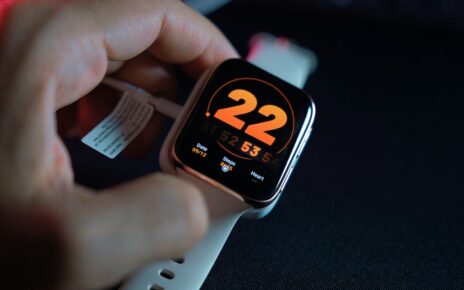The Intersection of Technology and Fashion
Technology has transformed various industries, and the fashion industry is no exception. High-tech wearable designs have revolutionized the way we think about fashion, merging style and innovation. This article delves into the exciting world of fashion technology, exploring the latest trends and advancements in high-tech wearables.
The Evolution of Fashion and Technology: Fashion and technology have had a longstanding relationship, with each influencing the other. Over the years, technology has played a pivotal role in enhancing the functionality and aesthetics of fashion. From sewing machines to computer-aided design (CAD) software, technological advancements have propelled the fashion industry forward.
High-Tech Wearable Designs in Fashion:
A. Smart Textiles and Fabrics: Smart textiles have emerged as a game-changer in the fashion industry. These fabrics are embedded with electronic components or conductive materials, enabling them to interact with their environment. To incorporate smart textiles into fashion, follow these steps:
- Choose the right smart textile: Select a fabric that aligns with the desired functionality, whether it’s thermoregulation, moisture-wicking, or data collection.
- Integrate electronics: Seamlessly integrate electronic components into the fabric, such as sensors or conductive threads.
- Design with aesthetics in mind: Ensure that the smart textile maintains the desired style and appearance while delivering its intended functionality.
B. Intelligent Accessories and Wearables: Intelligent accessories and wearables have become increasingly popular, adding a tech-savvy flair to outfits. These accessories seamlessly merge fashion with functionality. To incorporate intelligent accessories into fashion, consider the following steps:
- Identify the purpose: Determine the functionality the accessory should provide, whether it’s fitness tracking, notifications, or augmented reality experiences.
- Select the right technology: Choose the appropriate technology, such as Bluetooth connectivity, sensors, or microcontrollers, to enable the desired functionality.
- Design for comfort and style: Ensure that the accessory is comfortable to wear and aligns with current fashion trends.
C. Internet of Things (IoT) in Fashion: The Internet of Things (IoT) has found its way into the fashion industry, creating connected garments and enhancing the consumer experience. To implement IoT in fashion, follow these steps:
- Connect garments to the IoT: Integrate sensors or RFID tags into garments to enable data collection and connectivity.
- Enable seamless communication: Establish a network that allows garments to communicate with other devices, such as smartphones or smart home systems.
- Utilize data for personalization: Leverage the collected data to offer personalized recommendations, enhance the shopping experience, or provide real-time feedback on garment usage.
Benefits and Challenges of Fashion Technology: Fashion technology brings numerous benefits to both consumers and the industry as a whole. However, it also poses challenges that need to be addressed. Some benefits and challenges include:
-
Benefits:
- Enhanced functionality and performance of clothing.
- Improved sustainability through the use of eco-friendly materials and processes.
- Personalized experiences and customization options for consumers.
- New revenue streams and business opportunities for fashion brands.
-
Challenges:
- Balancing aesthetics and functionality in high-tech wearables.
- Ensuring data privacy and security in connected garments.
- Navigating the rapid pace of technological advancements.
- Overcoming consumer adoption barriers for new technologies.
The Future of Fashion Tech: As technology continues to advance, the future of fashion tech holds limitless possibilities. We can expect further integration of smart textiles, the rise of augmented reality in fashion, and increased connectivity through the IoT. The boundaries between fashion and technology will blur, creating a new era of innovative, high-tech wearable designs.
The intersection of technology and fashion has opened up exciting avenues for creativity and innovation. High-tech wearable designs, from smart textiles to intelligent accessories, have transformed the fashion industry, redefining the way we interact with and perceive clothing. Embrace the future of fashion tech and explore the endless possibilities that lie at the intersection of fashion and technology.



